Classical CDs Round-Up 15 | reviews, news & interviews
Classical CDs Round-Up 15
Classical CDs Round-Up 15
Danish symphonies, a cappella choral music and quirky Americana
This month’s carefully sifted new releases include some quirky Americana and a piano filled with ping-pong balls. A Baroque specialist plays some ripe orchestral transcriptions and a neglected cello concerto gets a new ending. Six Danish symphonies blow the cobwebs away, and we’ve two discs of music by a 20th-century German master. There are songs from Vienna, and a cappella choral music from Russia. A contemporary English composer celebrates the town of his birth. The most soothing of requiem settings contrasts with an hour of Soviet ballet music, prompting memories of circuses and Sunday-night telly. There’s an enjoyable piano recital and a DVD demonstrating that some artists get better and better as they age.
CD of the Month
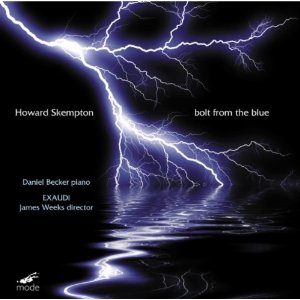 Howard Skempton: Bolt from the Blue
Howard Skempton: Bolt from the Blue
Daniel Becker (piano), Exaudi, dir James Weeks (Mode)
I fell in love with Howard Skempton’s Lento many years ago – a radiant, stately slice of sun-drenched English Minimalism which baffles as much as delights: how can such a simple set of chord progressions be so alluring?
Skempton was born in 1947 and studied with the English composer Cornelius Cardew in the 1960s, whom he credits with helping him discover a radically simple musical language. Skempton’s sleeve note quotes Britten, who remarked that it was "difficult to write simple music with character". The collection of piano and choral miniatures on this CD are remarkable – their musical language at times naively direct and simple, but never, ever simplistic. The piano miniatures dominate, and a careful listen reveals just how varied Skempton’s defiantly tonal language is – the sudden fortissimo chords in the second part of The Mold Riots shock, as does the unexpected rapid movement in the Guitar Caprice. And Skempton’s offbeat tribute to his birthplace Leamington Spa deserves to be blasted out of loudspeakers in the town centre.
The vocal music is, if anything, more affecting; the quartet of womens’ voices in the Five Poems of Mary Webb sound delicious. A setting of James Stephens’s The Snare provides a welcome dash of astringency. There are 37 works on this beautifully produced disc, and sadly there’s no space to rhapsodise about each one. Daniel Becker plays the piano works with modesty and affection, and James Weeks’s Exaudi sing the choral pieces with a combination of warmth and unnerving accuracy.
Listen to Howard Skempton's Lento
{youtube}zBXhRbCz3IM {/youtube}
- Find Bolt from the Blue on Amazon
Other Releases
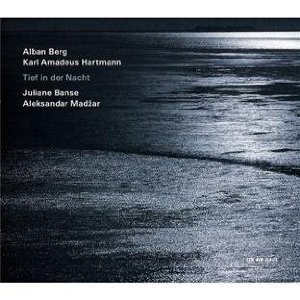 Alban Berg/Karl Amadeus Hartmann: Tief in der nacht
Alban Berg/Karl Amadeus Hartmann: Tief in der nacht
Juliane Banse (soprano), Aleksandar Madžar (piano) (ECM)
Alban Berg’s Seven Early Songs were written in the first decade of the 20th century under the supervision of his teacher Schoenberg. They really do sit on the edge of an abyss – often exquisite, with harmonies stretched to breaking point. They cover a huge stylistic range – the soft late-Romanticism of a song like Im Zimmer followed by Liebesode and Sommertage, where we can hear Berg’s musical imagination starting to take exploratory flight. Juliane Banse’s tone is ideal – warm, never shrill, and she negotiates Berg’s often angular lines with ease. She also gives us nine other songs written during the same period in the composer’s life. How much Berg’s music developed in the space of 20 years is shown by comparing his two settings of Theodor Storm’s poem Schließe mir die augen beide (Close Both My Eyes) – chromatic but diatonic in 1907, and dodecaphonic in its 1925 version. Both versions are great, the latter showing just how alluring 12-tone music can sound in the right hands.
Karl Amadeus Hartmann’s 1955 Lamento was arranged by its composer from a score written nearly 20 years earlier and dedicated to Berg’s memory. Three movements set poems written by Andreas Gryphius during the Thirty Years War. Aleksandar Madžar’s accompaniments are thrilling during Hartmann’s grittier moments. This is tough, impressive music, its violence tempered by the emotional release which Hartmann provides in the quiet, moving coda to the final song Friede. Eloquent sleeve notes by Paul Griffiths; this is very, very impressive.
- Find Tief in der nacht on Amazon
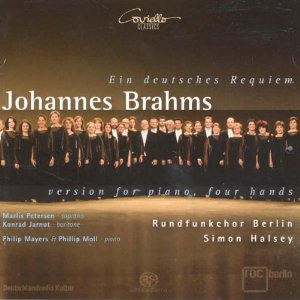 Brahms: Eine deutsches Requiem (version for piano, four hands)
Brahms: Eine deutsches Requiem (version for piano, four hands)
Rudfunkchor Berlin, Simon Halsey (Coviello Classics)
The German Requiem is a million miles away from those by Mozart and Verdi. Each of its seven movements ends in a major key, and it’s a work of warmth and consolation rather than holy terror. The impetus for its completion may well have been the death of Brahms’s mother in 1865, an event which also prompted the elegiac slow movement of the Horn Trio.
Where this new recording scores is in its use of Philip Moll’s new version for piano, four hands, based on the composer’s two keyboard versions. Brahms was never the most transparent of orchestrators and the impression here is one of brightness and light.
Simon Halsey is best known in the UK for his work with the CBSO Chorus and has directed the excellent Rudfunkchor Berlin since 2001. Thanks to flowing speeds, the busier contrapuntal sections have a freshness and clarity, and this is an impressively unsentimental experience. The long second movement’s funeral tread is fleet and ominous and Marlis Peterson and Konrad Jarnot are excellent soloists in the middle movements.
- Find The German Requiem on Amazon
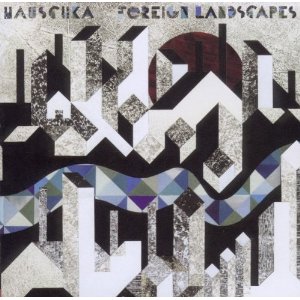 Hauschka: Foreign Landscapes
Hauschka: Foreign Landscapes
(Fat-Cat)
Hauschka being the pianist and composer Volker Bertelmann. He’s an advocate of the prepared piano – a term coined by the great avant-garde composer John Cage for the technique of "preparing" a piano by inserting objects - screws, tictacs, sheets of paper, ping-pong balls – inside the instrument, radically changing the sound. It’s more than a gimmick – the sounds can be entrancing, and there’s always plenty of fun to be had in seeing instruments pushed to the limit.
Watch a clip of Hauschka at work
Most of the pieces on this disc are scored for a chamber orchestra, and there’s a pleasing dark reediness to Hauschka’s orchestrations, often dominated by low clarinets and trombone. The album really comes alive when we hear the prepared piano, which is often buried too deep in the mix, decorating the Kurt Weill-like textures with clicks, pings and rattles. Mount Hood, Early in the Park and Kouseiji are the highlights – three haunting compositions for solo prepared piano. Don’t be nervous – this is a low-key but satisfying, entertaining listen.
- Find Foreign Landscapes on Amazon
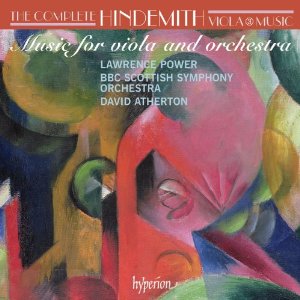 Hindemith: Music for Viola and Orchestra
Hindemith: Music for Viola and Orchestra
Lawrence Power (viola), BBC Scottish Symphony Orchestra/David Atherton (Hyperion)
In the 1920s and 1930s Paul Hindemith’s reputation was riding high and he was considered as important a figure as Stravinsky and Bartók. He’s now sadly undervalued, perceived unfairly by some as a prolific producer of dull Neo-Classical scratchings. So an album’s worth of music composed for viola (Hindemith’s main instrument) might not seem an alluring prospect, but the results really shine here. Hindemith was an outstanding craftsman in the best possible sense, able to play almost every orchestral instrument and musicians will admit privately that much of his music is incredibly rewarding to play. The works on this disc fall nicely into two categories: two spiky, witty pieces from the 1920s and two more graceful ones from the mid-1930s.
The Op 48 Konzertmusik which opens the disc is echt-Hindemith, a tour de force five-movement suite full of idiomatic contrapuntal writing, carefully scored for a chamber ensemble lacking high strings so that the viola can sing out. It’s witty and unforbidding music, any unexpected kinks in the harmonic language always resolved in a defiant tonal display. The final Sehr lebhaft is delightful, with a nicely emphatic payoff. The 1927 Kammermusik No 5 is similarly brusque and affirmative, with the closing military march variations ending things with a grin. There’s not an ounce of fat on these scores – every note is audible and counts for something. Lawrence Power featured on an impressive Hyperion disc of Hungarian viola concertos last year and he’s equally persuasive here, able to switch from the early works’ brashness to the noble, touching Trauermusik with ease, an elegy composed in six hours upon the death of King George V in 1936. The most emotionally satisfying work on the disc is the 1935 concerto Der Schwanendreher, balancing Hindemith’s ability to both move and entertain. There’s stylish, pointed support from David Atherton and the BBC Scottish SO and the recording quality is exemplary.
- Find Hindemith: Music for Viola and Orchestra on Amazon
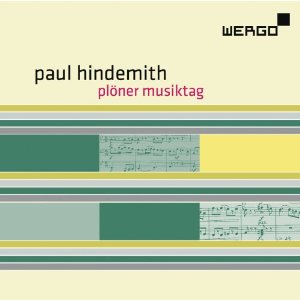 Hindemith: Plöner Musiktag
Hindemith: Plöner Musiktag
(Wergo)
Yet more Hindemith, in this case the first complete recording of the Plöner Musiktag (The Music Day at Plön), composed in 1932 on the suggestion of one Edgar Rabsch, head teacher of a progressive boarding school in the Schleswig-Holstein town of Plön. Rabsch, at the time a supporter of contemporary music, encouraged all pupils to learn instruments; Hindemith was so impressed by the school’s performance of one of his works that he was persuaded to write a whole day’s worth of music for them. Hindemith believed in the idea of Gebrauchsmusik – music composed to be useful, adaptable and accessible, and Plöner Musiktag is a near-perfect example. The scoring was originally notated for high, middle and low instruments – Rabsch used the players which he could draw upon in his school. Here, Jobst Liebrecht directs a huge cast of young singers and instrumentalists in a recording made after a performance in Berlin in 2008.
The diversity is enchanting – majestic brass fanfares, recorder trios, choirs and lots of percussion. Listen out for the massed recorders in the March opening the central Cantata – composed at high speed so as not to exclude the youngest pupils, given an hour to learn their parts. The Cantata uses a 16th-century text entitled Admonition to youth to apply themselves to music which still makes for pertinent reading: “the schoolchildren nowadays who sport themselves like clumsy oafs. Because they have no respect for music and cannot see the point of it, they remain as thick as two spuds”. Indeed. This youthful, passionate performance brims with infectious joy.
Listen one of Hindemith’s recorder pieces for Ploner Musiktag
- Find Plöner Musiktag on Amazon
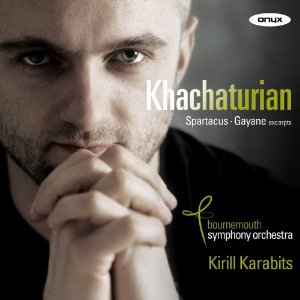 Khachaturian: Spartacus; Gayaneh (excerpts)
Khachaturian: Spartacus; Gayaneh (excerpts)
Bournemouth Symphony Orchestra/Kirill Karabits (Onyx)
For his first recording with the Bournemouth Symphony Orchestra, Kirill Karabits has chosen a generous selection of extracts from Aram Khachaturian’s two most famous full-length ballet scores. The results are great fun, never sounding monotonous despite the preponderance of fast tempi and offbeat cymbal clashes. There’s frequently a delicious piquancy to Khachaturian’s harmonies which he attributed to his Armenian upbringing, and the same orchestral tics keep recurring – swirling harps, folk-like wind solos, rippling piano textures underpinning fruity cello themes. It’s impossible not to enjoy, and Kirill Karabits’s debut recording as the Bournemouth SO’s principal conductor has kept me entertained during the recent freeze. Spartacus, composed in 1950, achieved fame when the Adagio of Spartacus and Phrygia became a well-known Sunday-night TV theme:
Watch the end credits of TV show The Onedin Line
It was also appropriated by the Coen brothers for The Hudsucker Proxy. It sounds suitably surging here, and the closing Dance of the Gaditanian Maidens embodies what Khachaturian could do best, ie start with a slow, catchy theme, then repeat it whilst increasing the tempo and volume.
The excerpts from Gayaneh (1942) are less familiar. The ballet won the Stalin Prize in 1943, undoubtedly helped by a patriotic plot set on a collective farm. Musically it’s more quirky than Spartacus; sample the percussion writing in Uzundara or the brassy smears in the Dance of the Mountaineers. And Karabits does include the inevitable Sabre Dance, still goofily amusing despite its ubiquity. Playing and recording are excellent.
- Find Spartacus, Gayaneh (excerpts) on Amazon
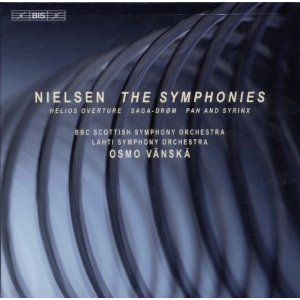 Nielsen: The Symphonies
Nielsen: The Symphonies
BBC Scottish Symphony Orchestra, Lahti Symphony Orchestra/Osmo Vänskä (BIS)
Carl Nielsen’s six symphonies were written between 1891 and 1925, nicely spanning his creative career before his premature death in 1931. This has always bugged me, as Sibelius, born in the same year (1865), lived until 1957 but published very little after the late 1920s; Nielsen died full of fire and energy and could probably have churned out several more major works. Nielsen’s reputation outside Denmark really took off in the 1950s, and his symphonies are almost standard repertoire now; Sir Colin Davis has started a recorded cycle with the LSO. You’d have to have a cold heart not to respond to the first three symphonies; at times you feel you’re on the receiving end of a warm, Scandinavian bear hug. Which is where Osmo Vänskä can miss the mark – he’s often too brusque and officious, giving the listener a polite handshake instead of a smile in the First Symphony. He takes the Second Symphony’s opening Allegro collerico really quickly, giving us plenty of fire, but missing the humanity. But the details begin to tell, and that superb orchestral snarl near the end registers brilliantly. The Sinfonia Espansiva’s first movement is almost too forceful, the crazed waltz at its centre more manic than joyful, but the glowing slow movement coda with its distant human voices really does sound ecstatic here.
Nos four to six are the highlights in the set; the Inextinguishable’s life-force thrillingly vivid, with excellent duelling timpani in the last movement and an indulgently refulgent, romantic close. The Fifth Symphony’s side-drum cadenza is terrifying in Vänskä’s performance, but the final minutes of the piece are blazingly affirmative, all whooping brass and trilling winds. The enigmatic Sixth Symphony sounds lucid and assured here, its progress from innocent calm to bemusement very well traced – Nielsen’s black humour asserting itself in the bassoon fart which ends the piece. The BBC Scottish Symphony Orchestra play very well, coping heroically with Vänskä’s demands. These recordings were made between 1999 and 2002 and are now issued as a bargain box, with the addition of three of Nielsen’s shorter works, taped more recently with Vänskä’s own Lahti Symphony Orchestra. Pan and Syrinx is the highlight, a deeply strange but loveable piece. Demonstration-quality BIS sound, and excellent value.
- Find Nielsen: The Symphonies on Amazon
 Rachmaninoff: Liturgy of St John Chrysostym/Vespers (excerpts)
Rachmaninoff: Liturgy of St John Chrysostym/Vespers (excerpts)
accentus, Eric Ericson Chamber Choir/Laurence Equilbey (Naïve)
The choral sound is terrific; Laurence Equilbey’s wonderful French chamber choir accentus here joined by the Swedish Eric Ericson Chamber Choir. An ensemble of 65 voices gives this music a suitably Slavic heft but without the wobble which you’d expect from Russian singers. There’s no lacking in intensity, and the pitch-perfect intonation means that each vocal line is clearly audible. Rachmaninoff’s Liturgy and Vespers both draw heavily on Russian Orthodox chant; the phrases shaped by speech rhythms and the melodies generally narrower in compass. Both works effectively disappeared from the repertoire after the 1917 Revolution, to be revived in the 1960s.
There’s a gentleness, an intimacy to sections of the Liturgy; the velvety timbre of the men’s voices at the start of the "Our Father" movement leading to a fruity climax followed by a jaw-dropping bass solo from Vladimir Miller. The soft "alleluias" closing the Liturgy are ecstatic but so restrained. With the better-known Vespers of 1915 we’re again in safe hands; the passage at the end of the "Nunc dimittis" where the basses softly descend to a low B flat absolute magic. It’s a pity not to have complete recordings of both scores from this source, but as an introduction to two of the 20th century’s greatest a cappella choral works, this disc is unmissable.
Listen to accentus sing Vivaldi’s Winter
- Find Rachmaninoff: Liturgy of St John Chrysostym/Vespers (excerpts) on Amazon
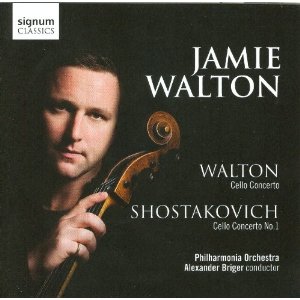 Walton/Shostakovich: Cello Concertos
Walton/Shostakovich: Cello Concertos
Jamie Walton, Philharmonia Orchestra/Alexander Briger (Signum)
William Walton’s 1956 Cello Concerto closes in a mood of delicious, calm resignation. It’s a beautiful work, one in which Walton’s capacity for spiky mischief and florid lyricism co-exist in perfect balance. The concerto was commissioned by Gregor Piatagorsky, who was unconvinced by Walton’s quiet coda and asked him for "a less melancholy ending". Walton was a slow worker and eventually came up with the goods in 1974, too late for Piatagorsky to perform – and the results have lain unpublished and unperformed ever since. Strangely, the revised coda doesn’t alter things that much. The stabbing tutti chords are a surprise but the mood feels unchanged, and the delicious, downward descent on solo cello is still Walton’s final word. But it’s fascinating to hear unperformed music by a still underrated composer, and Jamie Walton’s performance is excellent. He’s never too indulgent in the opening Allegro moderato and the results are both luxuriant and tart. We get the requisite fireworks in the central scherzo and in the faster variations in the last movement, and the moment where the concerto’s opening music returns is cheesy but emotionally very satisfying. Walton’s original ending is offered as a generous bonus track.
Jamie Walton’s account of the near-contemporary Cello Concerto No 1 by Shostakovich is also excellent, and he wisely accentuates the work’s pitch-black humour instead of wallowing in the misery. There’s some impressive solo horn playing from Nigel Black and the Moderato slow movement really sings here. Both works share alert accompaniments from Alexander Briger and the Philharmonia, but I’d advise that you listen to the Shostakovich first – the pessimistic feelings engendered will then be soothed away in a torrent of Waltonian warmth.
- Find Walton/Shostakovich: Cello Concertos on Amazon
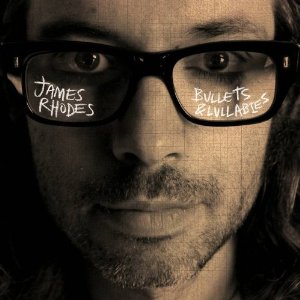 James Rhodes: Bullets and Lullabies
James Rhodes: Bullets and Lullabies
(Warner)
Bullets and Lullabies could also have been called Uppers and Downers, or Cocaine and Benzos according to pianist James Rhodes’s sleeve notes. It’s a snazzily presented recital split into two halves on separate discs - one fast and one slow. It’s like a pair of perfectly selected iTunes playlists. The concept works really well because Rhodes is such an entertaining musician and clearly in love with the music he’s presenting us with. There’s that nagging feeling you get when you discover a piece of music and get really frustrated because no one else seems bothered, so you end up making tapes and CDs for friends in the hope that they too will share your enthusiasm. I suspect that Rhodes knows what that feels like. He’s an interesting figure – the curious should read the profile on his website and feel quietly humbled.
Wisely, the first disc contains all the pyrotechnics. Most outrageous is Grigory Ginzburg’s transcription of Grieg’s In the Hall of the Mountain King – an insane, satanic romp. The opening movement of Alkan’s Grande Sonate is jaw-dropping, as is Rhodes’s account of Felix Blumenfeld’s Op 36, Etude for the Left Hand. With the second CD things slow down but with no drop in intensity. Debussy’s La plus que lente smoulders nicely and there are exquisite accounts of one of Grieg’s Lyric Pieces and Ravel’s Pavane. Be swept away by this player’s wild enthusiasm and enjoy this luridly packaged double album; if you’re worried that he can’t "do" profound, listen to the closing Brahms Intermezzo and become a convert.
- Find Bullets and Lullabies on Amazon
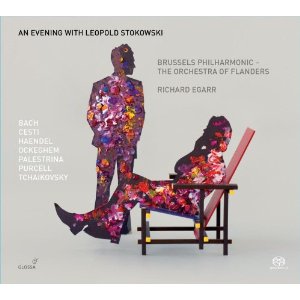 An Evening with Leopold Stokowski
An Evening with Leopold Stokowski
Brussels Philharmonic/Richard Egarr (Glossa)
Leopold Stokowski was still active as a conductor in his last months, before dying in 1977 at the age of 95. British-born, he famously led the Philadelphia Orchestra from the mid 1920s. He arranged and conducted the soundtrack to Walt Disney’s Fantasia in 1940 and was famous for his huge repertoire, giving the American premieres of many seminal 20th-century works. Here, the early music specialist Richard Egarr steps out of his comfort zone with an hour of Stokowski and Stokowski-inspired Baroque transcriptions. Egarr is quoted in the sleeve notes as preferring "a sincere arrangement from a true musician, rather than this or that rediscovered Bach concerto questionably reconstructed by a musicologist". He’s right – these versions of Bach, Purcell and Palestrina may be a shock to ears accustomed to Hogwood and Gardiner, but there’s no doubting the affection, love and respect shown towards the originals. The calorific but translucent sound which Egarr draws from his Brussels players is sheer class, achieved presumably through a combination of free string bowing and sophisticated production. You really do hear the theme from Bach’s D minor Toccata and Fugue bouncing from speaker to speaker; at the risk of sounding a bit anorak, I’d recommend that you listen at least once through headphones.
Dido’s Lament from Purcell’s Dido and Aeneas smoulders wildly, aided by throbbing basses, but the highlights are two more obscure works – Cesti’s Tu mancavi a tormentarmi and Palestrina’s Adoramus te, both transformed into wildly emotive laments for massed strings. Egarr also gives his own Stokowski-inspired versions of music from Handel’s Water Music and Ockeghem’s Intemerata Dei mater, the latter containing some of the most sonorous low wind and brass playing I’ve heard. The disc ends unexpectedly with a performance of Tchaikovky’s Marche Slave played Stokowski-style – not an ideal match for the other works, but still sounding great.
- Find An Evening with Leopold Stokowski on Amazon
Box Set of the Month
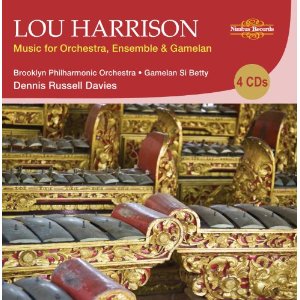 Lou Harrison: Music for Orchestra, Ensemble and Gamelan
Lou Harrison: Music for Orchestra, Ensemble and Gamelan
Dennis Russell Davis (Nimbus)
It’s remarkable how the nationality of some composers can be established within seconds; witness the angular trumpet intervals in the second section of Lou Harrison’s 1949 ballet Solstice which reek of Americana. One of the best composers you’ll never have heard of, Harrison’s music demands your attention now, and this bargain-priced four-disc set from Nimbus is an essential purchase. Born in 1917, he was a pupil of Schoenberg and was on friendly terms with such craggy figures as Charles Ives, John Cage and Henry Cowell. Harrison made extensive studies of Javanese gamelan music, and a selection of his own works for the gamelan fill the second CD. The best of them artfully combine mellifluous chiming with Western instruments – as with the piccolo trumpet solo soaring over the tuned gongs in Bubaran Robert. Gamelan music isn’t concerned with conventional Western musical processes, so Harrison’s orchestral and chamber works don’t often get bogged down in developments and recapitulations – things happen, repeat occasionally, usually in a cloud of transparent, radiant glitter – as with the sublime burst of tuned percussion heard in the final movement of Harrison’s 1982 Third Symphony.
There’s so much here that fascinates, beguiles and enchants – music which defies categorisation. The ocarina solo in the 1941 Canticle No 3, or the tack piano rattling away in Solstice have had me jumping for joy. I’m reluctant to say more other than expressing regret at not having heard these pieces before. Sensational – this music will enrich your life.
Watch Lou Harrison’s gamelan
{youtube}IMpcqRGvRh8 {/youtube}
- Find Lou Harrison: Music for Orchestra, Ensemble and Gamelan on Amazon
DVD of the Month
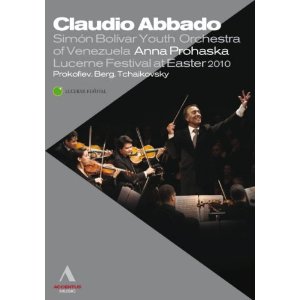 Lucerne Festival at Easter
Lucerne Festival at Easter
Claudio Abbado/Simón Bolivar Youth Orchestra of Venezuela (Accentus Music)
These performances are taken from two concerts given at the Lucerne Festival in March 2010. I can never tire of hearing Prokofiev’s Scythian Suite, a 1916 study in musical savagery prompted by the success of Stravinsky’s Rite of Spring. Lurid, percussive and full of good tunes, it’s a work that could have been composed for an exuberant youth orchestra and this performance is a stunner – any doubts raised by Claudio Abbado’s frail appearance quickly excised as soon as he starts conducting. Gustavo Dudamel is glimpsed in the audience, looking suitably impressed.
Abbado takes full advantage of the oversized wind and brass sections in Tchaikovsky’s valedictory Pathétique Symphony, unleashing terrifying brass salvos in the first movement’s climax – and how marvellous a moment it is when the lyrical second theme climbs out of the abyss after those bass trombone pedals. It’s a really good performance, with middle movements exuding warmth and wit, and an Adagio lamentoso making effective use of an enlarged bass section. There’s also a shimmering account of Berg’s Lulu Suite and Ach, ich fühls from Mozart’s Magic Flute, nicely sung by Anna Prohaska. Sound and image are excellent – despite the gloominess of two of the works, this is a remarkably feel-good experience, and mandatory viewing for Abbado fans.
Watch the trailer for Lucerne Festival at Easter
- Find Lucerne Festival at Easter on Amazon
- Read theartsdesk's Classical Music Round-Up 14
Share this article
more Classical music
 Bell, Perahia, ASMF Chamber Ensemble, Wigmore Hall review - joy in teamwork
A great pianist re-emerges in Schumann, but Beamish and Mendelssohn take the palm
Bell, Perahia, ASMF Chamber Ensemble, Wigmore Hall review - joy in teamwork
A great pianist re-emerges in Schumann, but Beamish and Mendelssohn take the palm
 First Persons: composers Colin Alexander and Héloïse Werner on fantasy in guided improvisation
On five new works allowing an element of freedom in the performance
First Persons: composers Colin Alexander and Héloïse Werner on fantasy in guided improvisation
On five new works allowing an element of freedom in the performance
 First Person: Leeds Lieder Festival director and pianist Joseph Middleton on a beloved organisation back from the brink
Arts Council funding restored after the blow of 2023, new paths are being forged
First Person: Leeds Lieder Festival director and pianist Joseph Middleton on a beloved organisation back from the brink
Arts Council funding restored after the blow of 2023, new paths are being forged
 Classical CDs: Nymphs, magots and buckgoats
Epic symphonies, popular music from 17th century London and an engrossing tribute to a great Spanish pianist
Classical CDs: Nymphs, magots and buckgoats
Epic symphonies, popular music from 17th century London and an engrossing tribute to a great Spanish pianist
 Sheku Kanneh-Mason, Philharmonia Chorus, RPO, Petrenko, RFH review - poetic cello, blazing chorus
Atmospheric Elgar and Weinberg, but Rachmaninov's 'The Bells' takes the palm
Sheku Kanneh-Mason, Philharmonia Chorus, RPO, Petrenko, RFH review - poetic cello, blazing chorus
Atmospheric Elgar and Weinberg, but Rachmaninov's 'The Bells' takes the palm
 Daphnis et Chloé, Tenebrae, LSO, Pappano, Barbican review - lighting up Ravel’s ‘choreographic symphony’
All details outstanding in the lavish canvas of a giant masterpiece
Daphnis et Chloé, Tenebrae, LSO, Pappano, Barbican review - lighting up Ravel’s ‘choreographic symphony’
All details outstanding in the lavish canvas of a giant masterpiece
 Goldscheider, Spence, Britten Sinfonia, Milton Court review - heroic evening songs and a jolly horn ramble
Direct, cheerful new concerto by Huw Watkins, but the programme didn’t quite cohere
Goldscheider, Spence, Britten Sinfonia, Milton Court review - heroic evening songs and a jolly horn ramble
Direct, cheerful new concerto by Huw Watkins, but the programme didn’t quite cohere
 Marwood, Power, Watkins, Hallé, Adès, Bridgewater Hall, Manchester review - sonic adventure and luxuriance
Premiere of a mesmeric piece from composer Oliver Leith
Marwood, Power, Watkins, Hallé, Adès, Bridgewater Hall, Manchester review - sonic adventure and luxuriance
Premiere of a mesmeric piece from composer Oliver Leith
 Elmore String Quartet, Kings Place review - impressive playing from an emerging group
A new work holds its own alongside acknowledged masterpieces
Elmore String Quartet, Kings Place review - impressive playing from an emerging group
A new work holds its own alongside acknowledged masterpieces
 Gilliver, LSO, Roth, Barbican review - the future is bright
Vivid engagement in fresh works by young British composers, and an orchestra on form
Gilliver, LSO, Roth, Barbican review - the future is bright
Vivid engagement in fresh works by young British composers, and an orchestra on form
 Josefowicz, LPO, Järvi, RFH review - friendly monsters
Mighty but accessible Bruckner from a peerless interpreter
Josefowicz, LPO, Järvi, RFH review - friendly monsters
Mighty but accessible Bruckner from a peerless interpreter
 Cargill, Kantos Chamber Choir, Manchester Camerata, Menezes, Stoller Hall, Manchester review - imagination and star quality
Choral-orchestral collaboration is set for great things
Cargill, Kantos Chamber Choir, Manchester Camerata, Menezes, Stoller Hall, Manchester review - imagination and star quality
Choral-orchestral collaboration is set for great things

Add comment